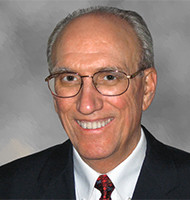The Tao was written twenty-five hundred years ago by a man named Lao-Tzu who wrote 81 verses that many believe to be the ultimate commentary on the nature of our existence. The basic text of these verses is called the “Tao Te Ching” or “The Great Way.” I don’t know if it is the ultimate commentary on our existence, but I do know that the essential principals of great leadership do not change as witnessed below by what was written in the Tao. The great scientist, inventor and artist, Leonardo da Vinci was a student of the Tao and like him we can all take heed to what has been written so long ago about great leadership. It is the 17th verse of the Tao, which addresses leadership:
“With the greatest leader above them,
People barely know one exists.
Next comes one whom they love and praise.
Next comes one whom they fear.
Next comes one whom they despise and defy.
When a leader trusts no one,
No one trusts him.
The great leader speaks little.
He never speaks carelessly.
He works without self-interest
and leaves no trace.
When all is finished, the people say,
“We did it ourselves.”
If you are going to take pride in anything take it in refusing to take credit for the achievement of others. This is the basis of the Coach Approach to Leadership. You will be surprised at how well people can think and how well they can strategize if given a chance. The idea is to have a system whereby your direct reports are given the responsibility to solve their own problems and can even participate in helping solve other issues in other departments. The overarching idea is to “Trust but Verify.” With this approach you will also get the opportunity to see firsthand whether you have been doing most of the creative thinking for your employees and perhaps even doing much of the work yourself. On the other hand, you might find that a subordinate may not be capable of doing what the job calls for and therefore, he or she may need a different position on the team or may need to be terminated.
Truly inspiring leaders encourage others to be responsible for their own decisions. A sure fire way to push responsibility down into the organization is to meet with people on a regular basis and ask opened ended questions as to what they think they should do. Of course, once they start having ideas and they commit to doing something, your job is to follow up. Remember what General Patton said, “Leadership is 5% command and 95% follow up.”
When a direct report commits to doing something, make sure that you drill down deeply enough until you are clear about what is being proposed so that there is no question about what is to be done. Far too many executive meetings end with its participants making assumptions about what is supposed to happen. It may seem petty, but if you ask for a recap from your direct report it will go a long way toward making happen what needs to happen.
Enlightened leadership usually doesn’t just happen on its own. There needs to be a Leadership Management System developed and deployed throughout the organization. When your employees become part of the solution they will no longer be the problem.
As written in “The Tao,” “With the greatest leader above them, people barely know one exists,” but your accountants and stakeholders will surely be pleased with all the black ink.
(c) Copyright 2014 by Hatton Group. All Rights Reserved.






